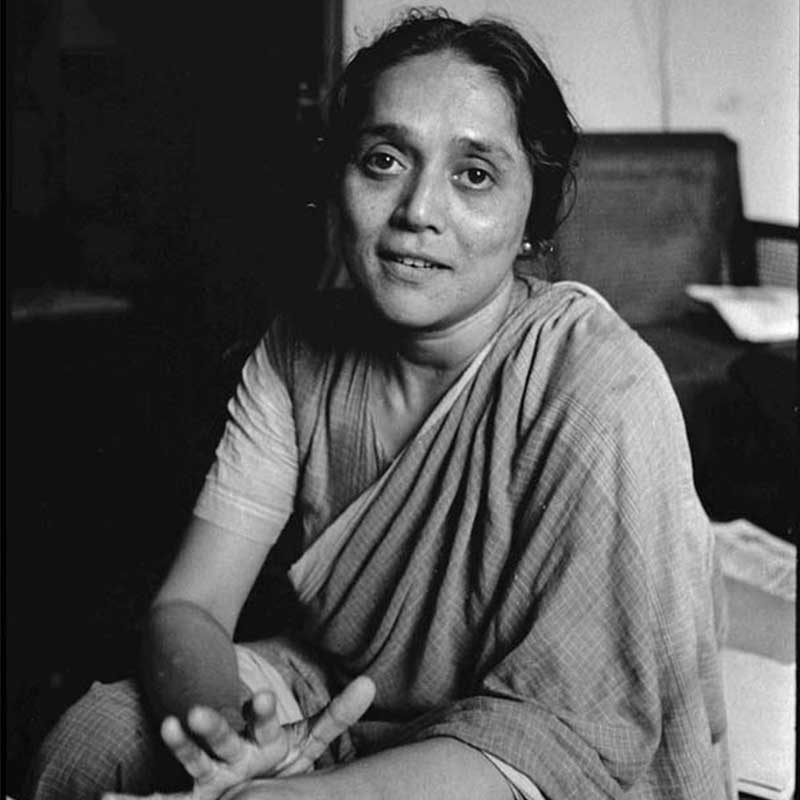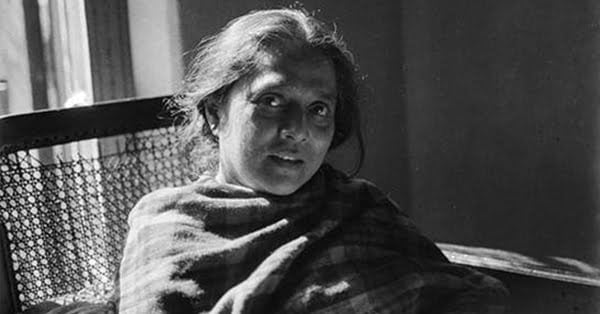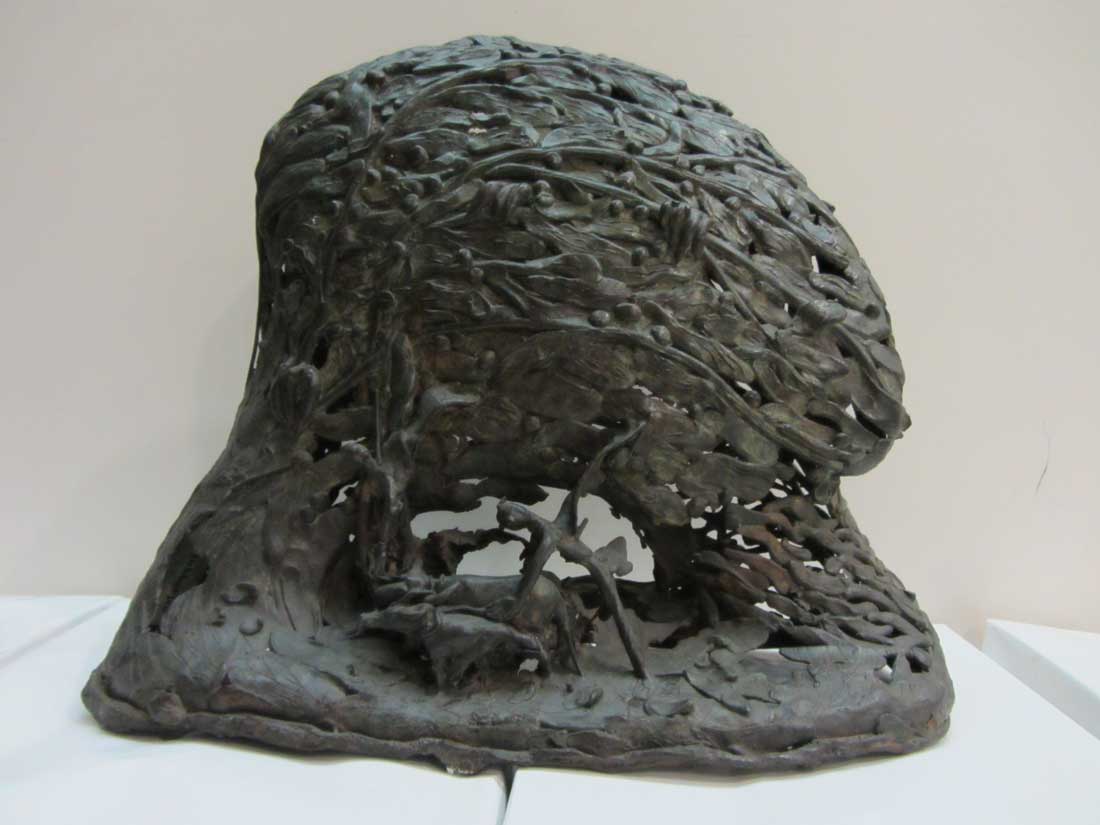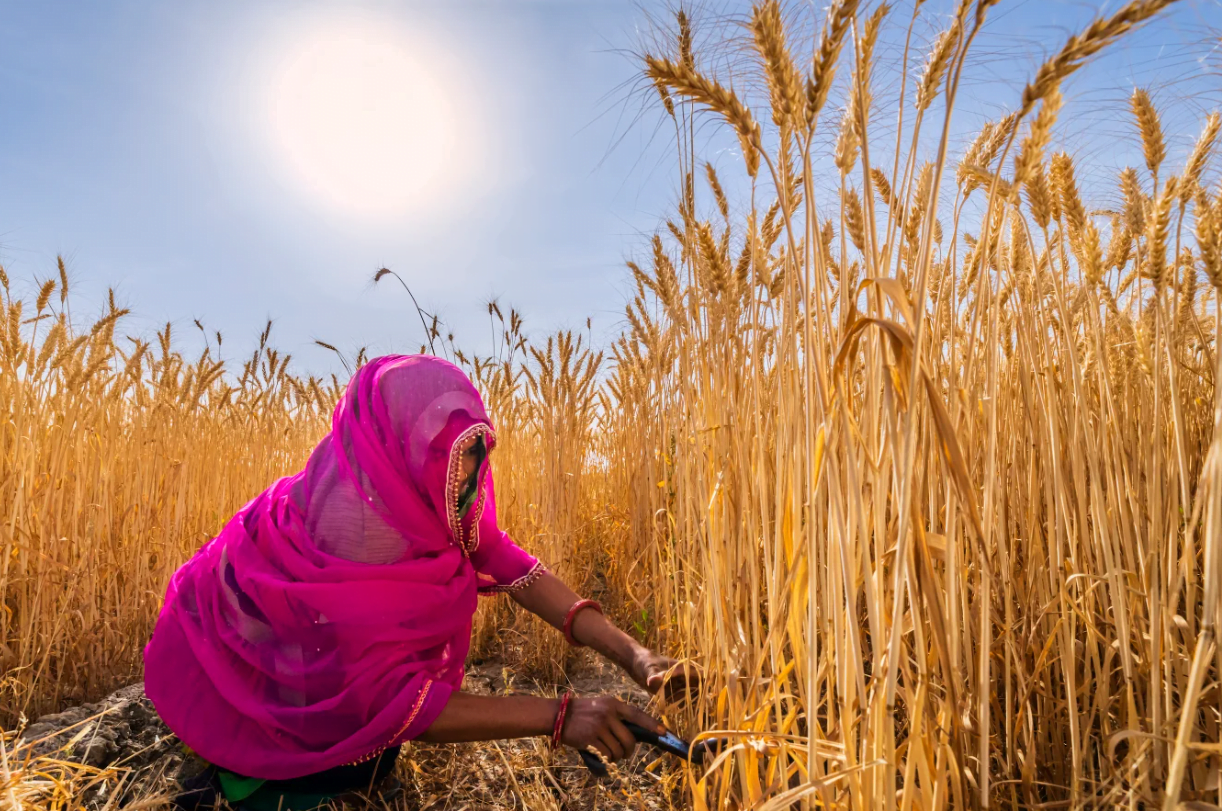Sculpting has been an art form popularly associated with male artists. When we think of women in art, one often associates them with painting or craft, which are believed to be more mellow and apt for their ‘nimble‘ fingers. Sculpting, on the other hand, is often perceived as a more masculine art form.
Representation of the art form also often includes a man fashioning sculpting tools and this representation is also sexualised in popular culture. The art form requiring the use of a variety of tools is often assumed to be difficult for women to take part in. Sculptures of deities or other objects for religious purposes are often made keeping in mind notions of purity and rituals, which conveniently exclude women from participating in the process.
These social taboos and obstacles have however not stopped women from entering the space of sculpting and establishing themselves as artists. Meera Mukherjee is one such artist who was popularly known for her sculptures. She was also a writer and painter. She was born in 1923, and developed an interest in artistic pursuits from a young age.

Meera Mukherjee joined the Indian Society of Oriental Art School at the age of 14, which was started by Abanindranath Tagore. She went on to enroll herself at the Delhi Polytechnic from where she received her diploma in painting, graphics, and sculpture in the year 1947. In 1953, she attended Hochschule fur Bildende Kuenste in Germany to study painting.
However, she discontinued her painting course within the first semester and went on to take up sculpture, the discipline for which she gained international prominence. Upon receiving the Indo-German Fellowship at the Akademie der Bildenden Künste (Academy of Fine Arts) in Munich, Meera Mukherjee went on to pursue her art but with also a realisation regarding the shortcomings in her art caused by the distance she had from her home which she found to be the main source of her artistic expression and inspiration.
Meera Mukherjee is a rarely researched artist whose works have been impactful in the world of not just art but also as an “artist-anthropologist travelling across the sub-continent documenting art and craft practices among artisanal communities.” What is interesting about her artistic expression is that she doesn’t limit herself only to one art form and uses paintings, writings, as well as teachings to express her thought and ideas
It is during this time, that it is believed that she also went on a journey to discover herself, and her identity and revisited her “Indianness”. “Meera Mukherjee’s desire to return to the folk artisans of India was famously triggered by an admonition from her Munich mentor, Tony Staedler, who told her to search for her art in the local traditions of her own country, not in Europe.”
In 1957, she returned to India to take up a job as an art teacher at the Dowhill School in Kurseong, Bengal until 1959, when she took up a job in Kolkata at Pratt Memorial School till her resignation in 1960. Meera Mukherjee’s sculptures were deeply inspired by the Gharuan people and Marals- Dhokra sculptors from the Bastar district of Chhattisgarh.
Also read: Nasreen Mohamedi: The First Female Abstract Artist Of India | #IndianWomenInHistory
Meera Mukherjee picked up the sculpting techniques specific to the Dhokras by apprenticing with them. The Dhokra method of sculpting is also known as cire perdue or the “lost wax” method. She developed her own form and method of sculpting from this, by innovating a bronze casting.
This method required initially sculpting works in wax in order to “preserve the tactile nature of the material, then building it up and adding surface decoration using strips and rolls.” It is believed that despite the natural hardness of the bronze material, Mukherjee’s artistic touch reveals the bronze to “appear delicate, organic and malleable, imbuing the work with a unique kind of lyricism and rhythm.”
To go into more detail regarding the themes she incorporates into her work, Meera Mukherjee’s sculptures are based on the common man engaged in day-to-day activities and chores. “Her subjects included, fisherfolk, weavers, women engaged in stitching, labourers…” Her work also saw resonances with Bengali calligraphy, nature, music and dance.
Some scholars and researchers who have studied Meera Mukherjee’s works and her journals closely identify a certain melancholy that is reflected in her art. While being actively participating and travelling across the subcontinent to draw inspiration for her work, she does intuitively express difficulties in merging her personal identity with her creative identity and the struggles which followed
Meera Mukherjee mounted her first show in 1960. She received positive recognition for her works and was awarded the President’s Award of Master Craftsman in metalwork. While she initially began her research tours across Madhya Pradesh herself, she soon after received a two-year stipend from the Anthropological Survey of India to assist her research.
“She was commissioned by the Anthropological Survey of India (ASI) to document the craft practices of metal-craftsmen in Central India. From 1961 up until 1964, she worked as a Senior Research Fellowship at the ASI and continued to conduct surveys on metal-craftsmen across India and Nepal. Her journey in India spread across the tribal heartland in the state of Madhya Pradesh, the east and the south. She was on a quest to discover the confluence of art forms with the daily lives of the artisans. During her tenure as a Senior Fellow, she was also closely associated with the promoters of ‘living traditions’ such as Prabash Sen and Kamaladevi Chattopadhyay.”
It is the sum of this research she conducted across the country which was published in 1978 under the auspices of the Anthropological Survey of India in Metal Craftsmen of India.
To list a few of her accolades, Meera Mukherjee won the Press Award for Master Craftsman in 1968, the Kolkata Ladies’ Study Group Award in 1976, and the West Bengal Government’s Abanindra Prize in 1981 and also held a fellowship from the Ministry of Culture from 1984 to 1986. She published the Folk Metalcraft in India (1978), Metal Craft in India (1978) and Metal Craftsmen in India (1979). She is also a recipient of the Padma Shri award (1992).
Meera Mukherjee is a rarely researched artist whose works have been impactful in the world of not just art but also as an “artist-anthropologist travelling across the sub-continent documenting art and craft practices among artisanal communities.” What is interesting about her artistic expression is that she doesn’t limit herself only to one art form and uses paintings, writings, as well as teachings to express her thought and ideas.
“Meera’s anthropological quest was also deeply subjective and modernist. ‘Information about these groups was collected,’ she noted, ‘while learning their crafts as a professional sculptor.’ Her diaries reveal time and again how these twin impulses interwove: an anthropological documentary maker taking notes about tribal and folk craftsmen in her travels across the country, and a deeply subjective aesthete, battling through her own negotiations with the obstacles of tribal forms, as she became part of the cultural economy of Bastar where she resided for extensive periods.”
Also read: Nudity In Art: Analysing The Politics Of Nakedness Through The Sculptures Of Kanayi Kunhiraman
Some scholars and researchers who have studied Meera Mukherjee’s works and her journals closely identify a certain melancholy that is reflected in her art. While being actively participating and travelling across the subcontinent to draw inspiration for her work, she does intuitively express difficulties in merging her personal identity with her creative identity and the struggles which followed.
“The ebb and flow of her art/creativity (rain, fire, shifting temperature of heating metal, viscosity, pores, casting process) seem to record an undulation of memory, pain, hope as much as of metal, wax, fire.” In some sense, one can view her sculptures and the malleable techniques she employs as a reconstruction of her own life and identity while exercising some flexibility as well.
Featured Image Source: Daak Bangla





